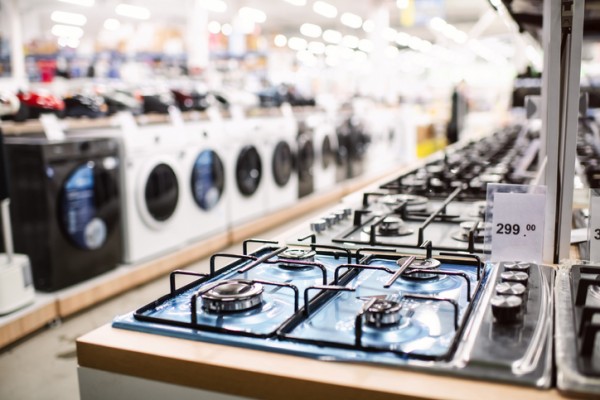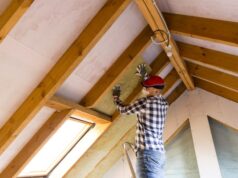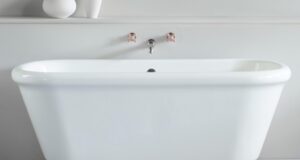
If you’re renovating a kitchen, laundry or bathroom, installing new appliances isn’t just about aesthetics or convenience—it’s also about compliance. Whether it’s a cooktop, oven, dishwasher or rangehood, every fixed appliance must meet specific standards to ensure safety, energy efficiency and legal use in Australian homes.
This guide covers the key regulations and standards you need to be aware of when installing household appliances.
Key compliance areas for appliances
1. Electrical safety and installation
All fixed appliances—such as ovens, induction cooktops and dishwashers—must be installed by a licensed electrician. These installations must comply with AS/NZS 3000, also known as the Wiring Rules. This standard sets out minimum safety requirements for electrical installations and includes:
- Proper circuit protection (e.g. RCDs)
- Correct cable sizing and earthing
- Compliance with clearance distances (especially around water)
If you’re replacing an old appliance with a new one, you can’t assume the existing electrical setup is still compliant. A qualified electrician will need to inspect and upgrade the connection if required.
2. Plumbing compliance
Some appliances, such as dishwashers and fridges with ice makers, require a water supply connection. These installations fall under AS/NZS 3500 (the Plumbing and Drainage series), which governs how water is delivered and discharged safely.
If the appliance includes a drainage system (like dishwashers), proper connection to the wastewater system must be confirmed. A licensed plumber should handle this work, and in many states and territories, a Certificate of Compliance is required once the job is completed.
3. Gas appliances
Any appliance powered by gas—cooktops, ovens, heaters—must comply with AS/NZS 5601 (Gas Installations). All work must be carried out by a licensed gas fitter and may require notification to your local authority, depending on your location.
Gas appliances must also be certified by the Australian Gas Association (AGA) or an equivalent body and carry a certification badge.
Key gas installation requirements include:
- Adequate ventilation
- Secure and compliant flueing (if required)
- Safe appliance clearances from combustible materials
4. Exhaust and ventilation
Rangehoods and ducted exhaust systems need to be vented in accordance with the NCC, Volume Two (Housing Provisions), and relevant manufacturer instructions. In bathrooms and laundries, mechanical ventilation is often required if natural ventilation isn’t sufficient, particularly for internal rooms.
For cooktops, rangehoods should be ducted externally to manage moisture, grease and smoke. Recirculating rangehoods are allowed but may not be as effective in removing airborne contaminants.
5. Energy efficiency labels
Most appliances sold in Australia are required to carry energy efficiency labels under the GEMS (Greenhouse and Energy Minimum Standards) Act. These labels make it easier to compare energy use between models and are regulated by the Department of Climate Change, Energy, the Environment and Water.
You’ll see star ratings on:
- Dishwashers
- Refrigerators
- Washing machines
- Clothes dryers
- Air conditioners
Higher star ratings mean greater efficiency, which helps reduce long-term running costs and environmental impact.
6. Water efficiency
Appliances that use water—like washing machines and dishwashers—must be registered under the Water Efficiency Labelling and Standards (WELS) scheme. Like energy star ratings, WELS labels show how efficient an appliance is at using water.
As of 2025, all appliances covered by WELS must meet minimum performance levels to be sold in Australia. Look for the blue WELS label when shopping.
Certificates and documentation
After installation, you may be issued with certificates depending on the type of appliance:
- Certificate of Electrical Safety (from a licensed electrician)
- Certificate of Compliance (from a plumber or gas fitter, depending on state/territory requirements)
- Manufacturer’s compliance certificates (for warranty or insurance purposes)
These documents should be kept with your renovation paperwork and may be required for inspections, resale or warranty claims.
Final tips for renovators
- Use licensed tradespeople only. DIY installation of electrical or gas appliances is illegal and unsafe.
- Check with your local council for any permits or notification requirements before installation.
- Always follow the manufacturer’s installation instructions, which are designed to comply with Australian regulations.
- If you’re upgrading or changing layouts, you may need to bring existing services up to current code—especially if they’re more than a decade old.
Summary of applicable standards
| Appliance type | Relevant standard(s) | Must be installed by |
|---|---|---|
| Electrical (cooktops, ovens, dishwashers) | AS/NZS 3000 | Licensed electrician |
| Gas (cooktops, heaters) | AS/NZS 5601 | Licensed gas fitter |
| Plumbing-connected (dishwashers, fridges) | AS/NZS 3500 | Licensed plumber |
| Rangehoods and mechanical ventilation | NCC Volume Two, Part 10.7 | Builder or qualified installer |
| All fixed appliances | GEMS Act, WELS Scheme | Registered suppliers |





